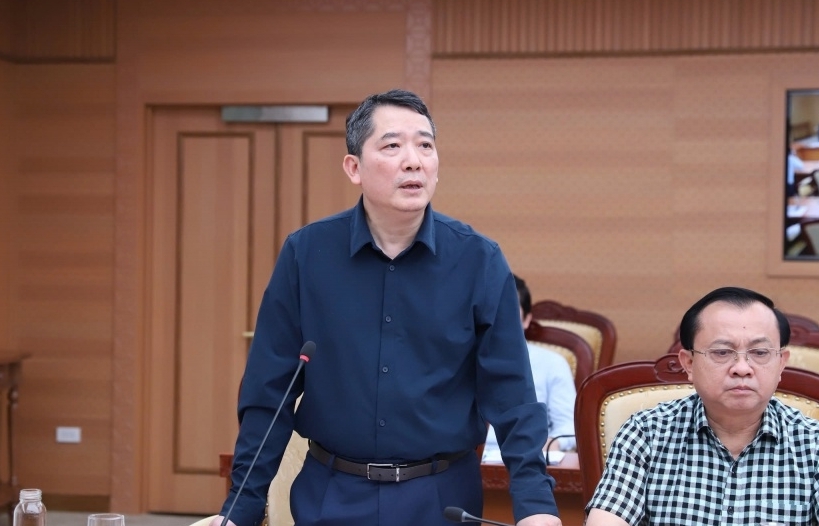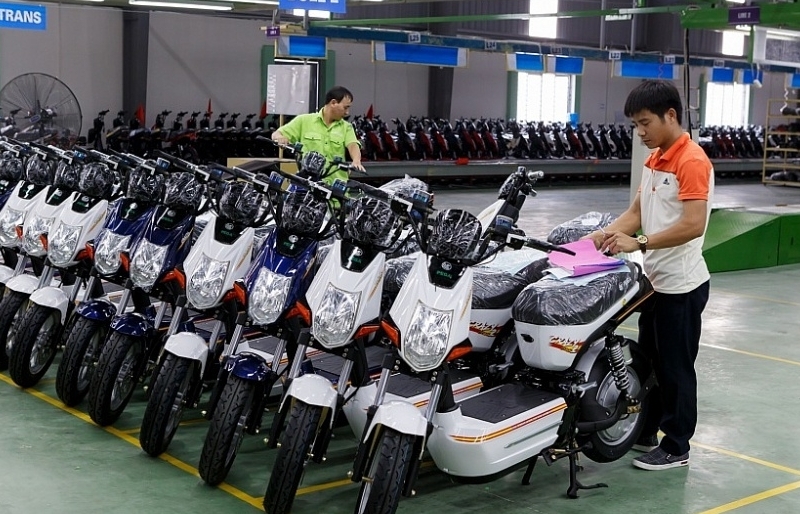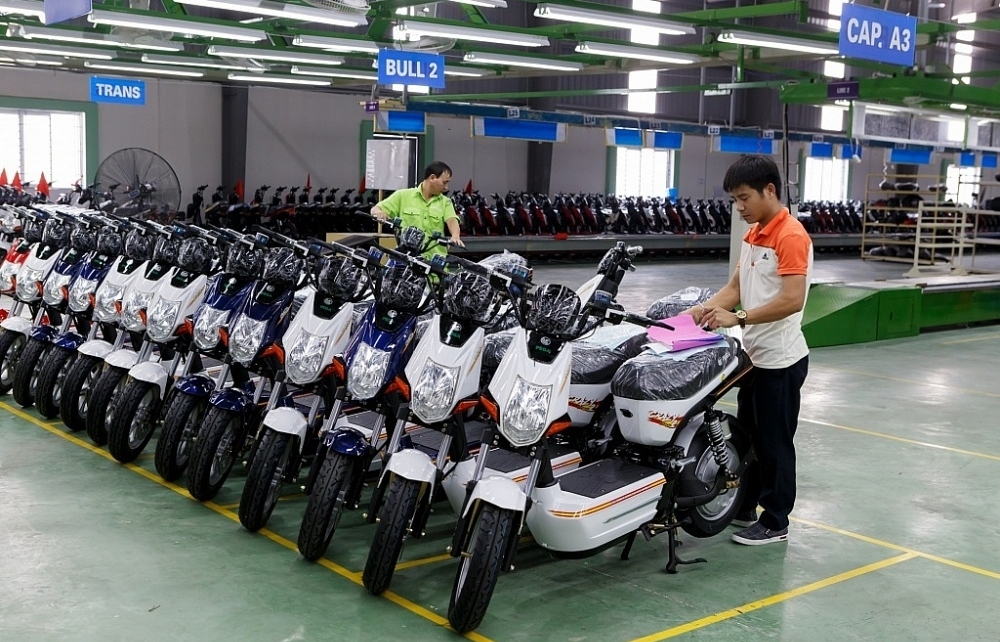Barriers in SOEs reform
Still lumber (Still lulled….status quo….?)
According to the latest report of the Ministry of Finance, the promulgation of mechanisms and policies to restructure SOEs in the first eight months of 2018 will continue to be implemented. The Government issued a resolution (Resolution No. 09/NQ-CP on the establishment of the State Capital Management Committee) and eight decrees for the restructuring of SOEs. Of the eight decrees, there are six decrees on the charter and organization of five groups (Petroleum, Chemicals, Electricity, Coal and Mineral, Military Telecoms), two corporations (Railways and Northern Food) and the Government's Decree No. 32/2018/ND-CP amending and supplementing a number of articles of the Government's Decree No. 91/2015/ND-CP on investment in state capital into enterprises and management, using capital and assets in enterprises.
By its authority, the Ministry of Finance has also issued three circulars guiding the regulations of the Government, including: Circular No. 40/2018/TT-BTC guiding the first sale of shares and the management and use of the revenue from equitization of SOEs and one-member limited liability companies, which are invested by SOEs with 100% charter capital into joint stock companies; the Circular No. 41/2018/TT-BTC guiding some contents on financial handling and valuation of enterprises when transferring SOEs and one member limited liability companies invested by SOEs with 100% of charter capital into joint stock companies and the Circular No. 59/2018/TT-BTC amending and supplementing a number of articles of the Circular No. 219/2015/TT-BTC guiding some contents of the Decree No. 91.
Besides improving the mechanism and policies, in the past eight months, the Prime Minister has approved the restructuring plan of Vietnam Chemical Group and the Military Telecoms Company. The Ministry of Transport approves the plan to restructure the Hai Phong Air Traffic Management Corporation, and they approved the plan to restructure 7 enterprises. Quang Binh province approved the restructuring plan of 2 enterprises.
Thus, since the Prime Minister approved the project on “Restructuring SOEs, the focus is on economic groups and state-owned corporations in the period 2016-2020” (on May 25, 2017), there are 35 enterprises that have been approved by the competent authorities for restructuring.
In terms of equitisation, in the first eight months of 2018, 10 enterprises with equitization plans have been approved by the competent level, including equitization of 9 SOEs and 1 civil service unit. The total value of enterprises is 29,524 billion VND, of which state capital is 15,271 billion VND. Total chartered capital in accordance with the plan approved by competent authorities is 18,272 billion VND, of which the State holds 11,158 billion VND; sold to strategic investors 2,289 billion VND; public auction of 4,733 billion VND, the remaining 82 billion VND was sold to employees and 5 billion VND to the trade union. In addition to these 10 enterprises, the number of newly approved equitisation plans is more than 30% of the plan for 2017-2018 and still very modest compared to the number of 127 enterprises that have been “naming” in the period 2017-2020.
Not to mention, the “lumber” (lulled), unregistered, not listing on the stock market after the equitisation still exists. In the list of 747 enterprises publicly announced by the Ministry of Finance in mid August 2017, so far, 138 companies have been listed and registered for trading on Upcom; 72 companies not registered for trading, listing; 23 companies have canceled the registration of public companies.
The situation of divestment is more positive. In 8 months, enterprises have divested 3,772 billion VND, earning 9,140 billion VND. Initial sale of shares for the first businesses gained good results when 20 companies sold the first shares with total sales value of 13.745 billion VND, earned 21.565 billion VND.
Fear to “lose interests”
Overall, the restructuring and renovation of SOEs are still “slipping” compared to the expectations. Still the familiar question: “Why?”.
Answering this question, Dr. Huynh The Du, Lecturer in Public Policy at Fulbright University said, “If we look at the equitisation process, we can see that the great barriers are benefits and goals. When equitized, state resources and social resources will be used more effectively. However, those that “lose” most are the managers of SOEs, direct operators. Equitization will reduce the privileges of this group. This is the biggest barrier.”
Along with that, another problem is that many still want the State to hold certain dominant shares, such as over 50% or to a lower level but still large. In fact, the holding of shares from 49% to 51% is two completely different positions related to the right to decide. If a “someone” holds a 30-40% stake in the company and buys some more shares, it is possible to reach 51% to be in a position to make decisions. That means that the shareholder can use different ways to transfer the resources and benefits of the current enterprise for their own advantage. At this point, enterprises actually buy only the shell, the basic 49% of the State capital is no longer effective, especially when the status of “everybody’s business is nobody’s business” in the management of this capital still exists.
According to Dr. Huynh The Du, when conducting equitization, the important step is not to allow shareholders with 45% to buy more than 5%, but must have mechanisms to ensure the entire remaining capital is sold through the process of public auction or guaranteeing a balanced purchase in the enterprise. As such to create a healthy development process. Otherwise there will be loss of capital, loss of state resources.
“Not to mention there are a lot of backyard issues in it, such as a very large SOE, which only equitize a small number of divisions, but those divisions create resources, generate revenue, create the main value of the enterprise. It's no different than the advantages for a group,” Mr. Du said.
From the viewpoint of state management, Mr. Dang Quyet Tien - Director of the Department of Finance, Ministry of Finance said that the problem lies in the stage of implementation and determination to change the perception of the head of business. Three of them have not been done yet. These are: Compulsory discipline of the higher levels, the Government, and the Prime Minister are not strictly enforced; also afraid in the implementation of the nature of reform when equitized, psychological fear of losing position, role after equitisation; The idea of avoiding responsibility, fear of competition should not be fierce and strong when implementing new procedures in a strict, publicly transparent, clear manner.
Empowering “outsiders”
Given the solution, Mr. Dang Quyet Tien said: As a unit of mechanism and policy on equitization, the Ministry of Finance has basically completed the legal framework. During the implementation process, there were some specific issues. The Ministry sent staffs to regularly catch up and timely listen to difficulties in order to timely solve problems of corporations, groups and localities. In addition, it is necessary to strengthen the supervision, inspection and sanctioning for representative agencies, owners of enterprises. Particularly, it is necessary to revise the lists of equitisation and divestments, and if any units are delayed, they must be reminded, reviewed.
In the case of the divestment list, agencies and enterprises that have registered in 2017 and cannot complete in 2018, should boldly transfer to State Capital Investment Corporation (SCIC) - a professional company. In addition, it is necessary to request agencies and enterprises to publicly announce the implementation schedule, in quarterly and 6-month processes, with the name of the person in charge. For example, the chairperson of the provincial People's Committee in charge of equitization of A and B (enterprises) should be clearly identified in the roadmap for 2018, 2019 and 2020. The clarification will clarify the progress, the one to solve the problems as well as responsibility of the heads of duties.
One of the more important solutions, according to Mr. Tien, is to focus more strongly on the organization of the implementation in association with the sanctions and responsibilities of the head of the enterprise, the representative office of the owner; at the same time, to promote the openness and transparency of the roadmap, progress, results and responsibilities of the implementers. The roadmap with clear solutions will ensure equitization progress, divesting capital in SOEs.
Meanwhile, Mr. Huynh The Du said that in order to deal with the “benefits” issue when restructuring SOEs, outsiders should be allowed to enter into equitization or set up a unit called the Equity Board with the decisive role of those who are not directly related to the enterprise for speeding up the equitisation process. People in the enterprises can participate as members of the board but they cannot be deciders, because if so, the status of “lumbering” will continue to happen (the status quo will still occur….?) because “no one shoots themself in the foot, no one pushes the process to reduce one’s benefits”.
| Although there is less than 1% of the total number of enterprises, SOEs hold the key economic sectors of the country and make the largest contribution to GDP by nearly 30%. In addition, this sector also contributes significantly to the employment of laborers, ensuring social security, the implementation of national defense and security. However, the performance of SOEs is still not in proportion with the huge resources they hold. |
Related News

To open the door for industrial processing and manufacturing products to demanding markets
08:54 | 11/11/2024 Import-Export

What are the barriers to exports to the US?
10:15 | 14/08/2024 Import-Export

The key to overcoming barriers and expanding markets for F&B businesses
09:34 | 23/01/2024 Import-Export

Equitization and divestment target is difficult to become true
17:26 | 14/01/2024 Finance
Latest News

Many challenges in restructuring public finance
10:02 | 18/11/2024 Finance

Tax declaration and payment by e-commerce platforms reduces declaration points and compliance costs
09:19 | 17/11/2024 Finance

Disbursement of public investment must be accelerated: Deputy PM
19:32 | 16/11/2024 Finance

HCMC: Domestic revenue rises, revenue from import-export activities begins to increase
09:36 | 16/11/2024 Finance
More News

Effectively control fiscal and monetary policy : Deputy Prime Minister and Minister Ho Duc Phoc
09:33 | 16/11/2024 Finance

Seaport stocks surge amid positive sector outlook
13:52 | 15/11/2024 Finance

Striving for revenue to rise by over 15% compared to assigned estimate
10:01 | 14/11/2024 Finance

Budget revenue is about to be completed for the whole year estimate
08:34 | 13/11/2024 Finance

Tax authorities and Police join forces to crack down on e-invoice fraud
14:14 | 12/11/2024 Finance

State revenue collection poised to surpass annual target
10:11 | 12/11/2024 Finance

Amending regulations for proactive, responsible tax officials
08:55 | 11/11/2024 Finance

Drastic actions taken to complete 95% public investment disbursement goal: Gov’t press conference
20:07 | 10/11/2024 Finance

Revising policies to adapt to two-way impact of FTAs
09:24 | 10/11/2024 Finance
Your care

Many challenges in restructuring public finance
10:02 | 18/11/2024 Finance

Tax declaration and payment by e-commerce platforms reduces declaration points and compliance costs
09:19 | 17/11/2024 Finance

Disbursement of public investment must be accelerated: Deputy PM
19:32 | 16/11/2024 Finance

HCMC: Domestic revenue rises, revenue from import-export activities begins to increase
09:36 | 16/11/2024 Finance

Effectively control fiscal and monetary policy : Deputy Prime Minister and Minister Ho Duc Phoc
09:33 | 16/11/2024 Finance




